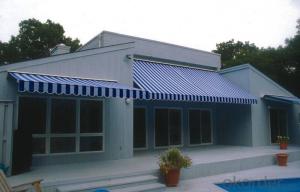Plastic pipes and fittings have revolutionized the way we approach modern plumbing and construction. They are versatile, durable, and relatively easy to work with, making them a favorite among professionals and DIY enthusiasts alike. In this article, we’ll explore the world of plastic pipes and fittings, their advantages, and how they can be used in various applications.
The Evolution of Plumbing Materials
Once upon a time, the world of plumbing was dominated by metal pipes. They were sturdy and reliable, but they came with their own set of challenges, such as corrosion and difficulty in installation. The introduction of plastic pipes marked a significant shift in the industry. They offered a lightweight alternative that was easier to handle and install, without compromising on performance.
Why Choose Plastic Pipes?
There are several reasons why plastic pipes have become the go-to choice for many. Let’s dive into some of the benefits that have contributed to their popularity:
– Lightweight: Plastic pipes are significantly lighter than their metal counterparts, making them easier to transport and install. This can save time and labor costs during construction projects.
– Corrosion Resistance: Unlike metal pipes, plastic pipes are not susceptible to rust or corrosion. This means they can withstand exposure to water and various chemicals without deteriorating over time.
– Cost-Effective: The production process of plastic pipes is less expensive than that of metal pipes, which translates to lower costs for consumers.
– Versatility: Plastic pipes can be used for a wide range of applications, from residential plumbing to industrial fluid transport systems. They can be adapted to suit various needs and requirements.
– Easy to Install: With the right tools and techniques, plastic pipes can be quickly and easily installed, often with a simple push-fit or solvent weld connection.
Types of Plastic Pipes
The market offers a variety of plastic pipes, each designed for specific uses. Some of the most common types include:
– PVC Pipes: Known for their durability and resistance to chemicals, PVC pipes are commonly used for both potable water and wastewater systems.
– PEX Pipes: Cross-linked polyethylene (PEX) pipes are flexible and can withstand high temperatures, making them ideal for radiant heating and cooling systems.
– CPVC Pipes: Chlorinated polyvinyl chloride (CPVC) pipes offer higher heat resistance than PVC and are often used in hot water systems.
– HDPE Pipes: High-density polyethylene (HDPE) pipes are strong and resistant to chemicals, making them suitable for both water and gas distribution systems.
Fittings and Connectors
To make the most of plastic pipes, a range of fittings and connectors are available to ensure secure and leak-free connections. Some of the popular options include:
– Push-fit Fittings: These fittings are quick and easy to install, requiring no special tools or glue. They simply push onto the pipe and lock into place.
– Solvent Weld Fittings: For a permanent and secure connection, solvent weld fittings are used. They create a chemical bond between the pipe and fitting, ensuring a watertight seal.
– Compression Fittings: These fittings use a nut and compression ring to secure the pipe in place. They are versatile and can be used with a variety of pipe materials.
– Flanged Fittings: Flanges are used to connect pipes to other systems or to create a transition between different pipe materials. They are ideal for situations where a strong, rigid connection is required.
Applications of Plastic Pipes
Plastic pipes have found their way into numerous applications, from the simplest to the most complex. Here are some examples of where they excel:
– Residential Plumbing: In homes, plastic pipes are used for water supply, drainage, and venting systems. They are a popular choice due to their ease of installation and resistance to corrosion.
– Commercial and Industrial Plumbing: Businesses and industries also benefit from the durability and versatility of plastic pipes, using them for water supply, wastewater, and even specialized fluid transport systems.
– Agricultural Irrigation: Plastic pipes are ideal for irrigation systems due to their resistance to UV light and chemicals, as well as their flexibility and ease of installation.
– Marine Applications: In the marine environment, plastic pipes resist saltwater corrosion and are used for water supply and waste systems on boats and docks.
Maintenance and Care
While plastic pipes are low-maintenance, there are still some best practices to follow to ensure their longevity:
– Avoid Direct Sunlight: Prolonged exposure to sunlight can cause some types of plastic pipes to degrade over time. It’s best to protect them with insulation or other materials.
– Regular Inspections: Periodic inspections can help identify any potential issues before they become major problems.
– Use Appropriate Fittings: Always use fittings that are compatible with the type of plastic pipe you are working with to ensure a proper seal and prevent leaks.
The Future of Plastic Pipes
As technology advances, so do the materials and manufacturing processes for plastic pipes. Innovations in materials like PEX-a and PEX-b have improved the flexibility and heat resistance of these pipes, making them even more suitable for a wider range of applications. The future looks bright for plastic pipes, with ongoing research and development promising even more durable and efficient solutions.
In conclusion, plastic pipes and fittings have come a long way since their introduction to the market. They offer a cost-effective, versatile, and reliable alternative to traditional metal pipes. Whether you’re a professional plumber or a homeowner tackling a DIY project, plastic pipes are a valuable asset to consider for your next plumbing or construction endeavor.

